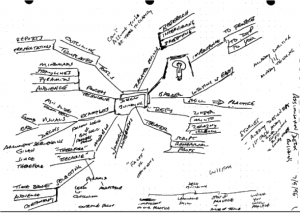 I’m fundamentally lazy so I’m always looking for tools to simplify whatever task I’m trying to accomplish. I’m currently teaching a course in project management and we’re working through how to build good project plans. In project management circles, there seems to be an infinite set of options for software tools to support project execution. Tool support for earlier stages receives less attention.
I’m fundamentally lazy so I’m always looking for tools to simplify whatever task I’m trying to accomplish. I’m currently teaching a course in project management and we’re working through how to build good project plans. In project management circles, there seems to be an infinite set of options for software tools to support project execution. Tool support for earlier stages receives less attention.
Most project management tools presume that you already have a plan to manage; how you create that plan is an exercise left to the reader. The tools treat the capture of phases and tasks as a data entry problem not a creative one. I see a project plan as an outline of tasks arranged and organized into a sensible order.
Creating that sensible order, however, is not an orderly process. It’s a thinking and writing task that of necessity proceeds in fits and starts, where order emerges only gradually. You don’t write a project plan starting at step one and marching along to step n anymore than you write a novel by starting with “It was a dark and stormy night…†and plowing ahead.
My preferred tool for the creative stage of project design and planning is a mindmap. Back in the day, I drew the initial maps by hand. Today, we’ve got software tools to make the process of creating and evolving plans smoother. I work primarily on Macs these days; my tools of choice include Scapple, Xmind, and MindManager.
There are plenty of other choices on every platform. Any of them is better than jumping straight into a tool built to manage project execution. And any of them is better than limiting yourself to a word processor or text editor.
I don’t worry about whether I am following the “rules of mindmapping†or have found the one perfect mindmapping tool. The key payoff is that I am using a tool whose fundamental design principles match the problem I am trying to solve.
Thanks for posting these. you are becoming some of my favourite blogs!